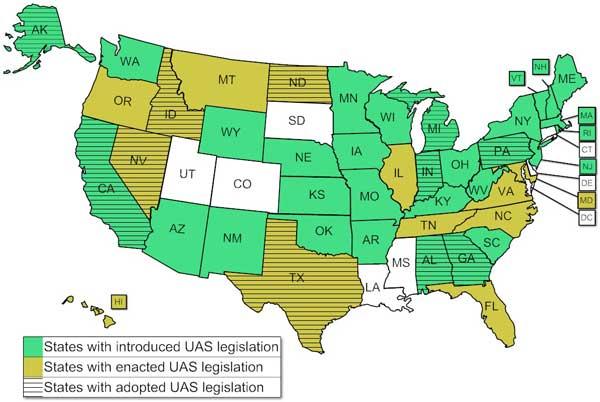For Whom the Bell Tolls – It Might Soon Toll for Your UAVs

The phrase “For whom the bell tolls,” was popularized in the mid-20th century when novelist Ernest Hemingway published his eponymous work in 1940. The Association for Uncrewed Vehicle Systems International (AUVSI), a drone advocacy group, published its opposition to air toll lanes in October 2022, arguing that doing so would hinder drone integration. It would not only “place an undue financial burden on an emerging technology, but fragment access to low level airspace lead[ing] to negative consequences for safety in the national airspace.”
Federal, state, and tribal governments are now considering regulations, many of them above public and private lands, raising questions about the creation of “toll roads” in the skies. Should they be created at all? If so, who should regulate the UAS lanes? Will they be at the same altitudes from state to state? How will drone package deliveries navigate to their destinations and back to their base again?
To Toll or Not to Toll the Sky
The issue of whether to charge commercial or governmental drone operators for navigating (AKA ‘avigating’) through a property owner’s airspace enroute to their destination, for say, package deliveries to private residences, could create a patchwork of operational rules UAV operators must follow from state to state or even within states, such as in Nevada or Texas. There, large areas of the ground below are uninhabited or quickly shift from uninhabited to densely populated, such as along the California-Nevada border near Reno and Lake Tahoe.
Several U.S. state legislatures, including those in Texas, Louisiana, West Virginia, and Mississippi, have introduced legislation to limit and tax UAV operations. These regulations include the creation of toll lanes in the sky at prescribed altitudes. While AUVSI argues these regulations could stifle economic growth, it could be argued that little stifles an industry’s growth more than a series of collisions, be they airborne or ground-based, resulting in loss of property or life. It is also worth noting that, in the U.S., all 50 states have their own motor vehicle regulations crafted and overseen by their respective motor vehicle departments.
AUVSI also notes the U.S. Federal Aviation Administration (FAA) established the BEYOND and Integration Partnership Agreement programs in 2017 to address what AUVSI believes might unnecessarily complicate, if not in fact eliminate, the need for such regulations. Will state legislators agree? Time will tell; but that time is rapidly approaching with commercial drone operations expected to begin as early as 2025.


